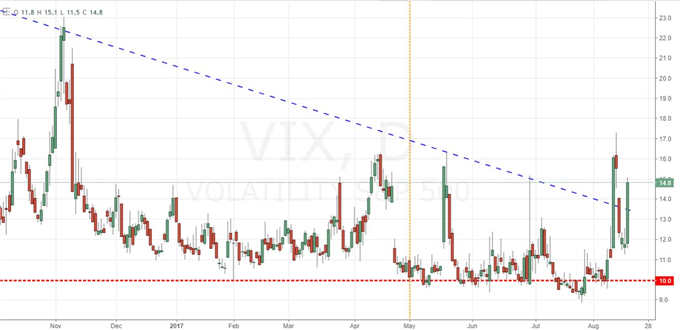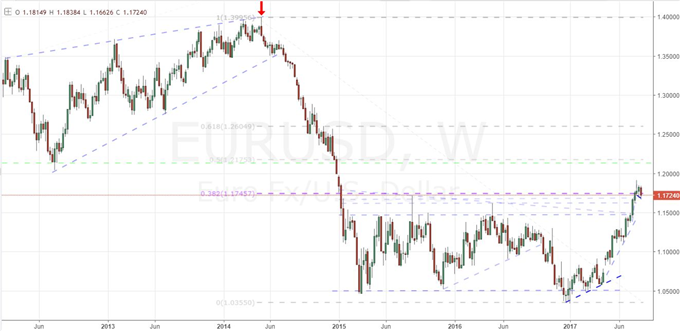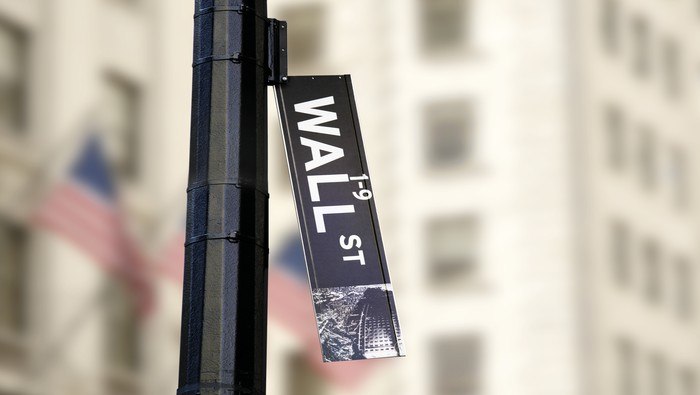Talking Points:
- Political risk in the United States and a terrorist attack in Barcelona added to a sense of unease in the markets
- A rumor (later denied) of Gary Cohn resigning and the confirmed failure of an infrastructure council leverages political fears
- ECB minutes show the central bank is watching the Euro and not afraid to make threats - watch EUR/USD, EUR/GBP and EUR/JPY
Are retail traders positioning for true reversals from EUR/USD, the S&P 500 and Gold? See the IG positioning data on the DailyFX Sentiment page.
The markets experienced another fit of risk aversion this past session. Against a backdrop where months of steady but passive gains had become the norm, such turmoil naturally registers very clearly on investors' radars. Yet, this situation is proving more troubling than just a complacent market feeling the natural growing pains of registering seismic activity in the financial system again. The risks (catalysts) that we are facing are growing deeper and more prominent. Where high profile fundamental threats meet ill-prepared and overleveraged speculative exposure, we are likely to find a brutal rebalancing to years of excess. There were many risk-related themes that arose this past 24 hours - including a terrible terrorist attack in Barcelona - but the market's focus seemed to migrate to the political troubles growing in the United States. Yet another wave of concern on this front following the James Comey scandal (and May 17 market drop) and last week's North Korea tension (and VIX surge) suggests this is not a flash-in-the-pan concern that can be ridden out via complacency.
One of the saving graces in risk aversion that we have experienced over the past few years is that the dive in sentiment has been fueled by short-lived developments or based on ill-defined and definitively speculative means. Comfort in holding long-risk exposure for so long was therefore never truly challenged for the 'investment' rank and the 'traders' regularly found the opportunity to buy dips for quick speculative gains. Yet, the increased frequency of volatility jolts and the lack of progress interspersed with more significant losses will further erode the market's comfort with complacency. In US political risk, we see a persistent feed of concern. Rather than the social developments and mere scandal though, the economic implications present explicit connection to the speculation. This past session, a rumor that economic advisor to President Trump, Gary Cohn, had resigned. While later denied, the market did not see it as an unlikely situation and perhaps an inevitable development after so many defections by staff. The concern stuck around even after the denial. What was not reversed was the news that a planned council that would focus on the strategy for infrastructure had been jettisoned before it was even formed. Any hope for an economic surge owing to campaign promises (particularly infrastructure spending to the tune of $1 trillion and tax reform) is all but dashed. And yet, the S&P 500 is still more than 16 percent higher than where it stood the day before the election with little real improvement in economic conditions and return potential.
Another aspect of the risk backdrop to monitor is monetary policy. The most hawkish of the major central banks - the Fed - showed in their minutes earlier this week that the pace of tightening may slow due to concerns over persistently low inflation. That is a step towards moderation where the reflection of sentiment is more subtle. Easing back from the ECB - a central bank already pushing the extreme end of the dovish boundary - on the other hand comes with a tangible sense of concern. There is not much room for the policy authority to ease its efforts further, so explicit references to the market need to be more overt to render any kind of influence. That said, in the transcript of their previous meeting the European monetary authority lamented the strength of the Euro following its 2017 climb against the Dollar. While not as direct, this looks a lot like their connection between monetary policy and markets back in 2014 which infamously forced a top in EUR/USD at 1.4000 and ushered in an incredible tumble. Will the market head the threat again? What will EUR/JPY and EUR/GBP do with their next moves as critical technical levels approach? How will the Dollar align - as a wayward carry currency or absolute safe haven? We discuss all of that at the possible cusp of risk aversion in today's Trading Video.




To receive John’s analysis directly via email, please SIGN UP HERE







